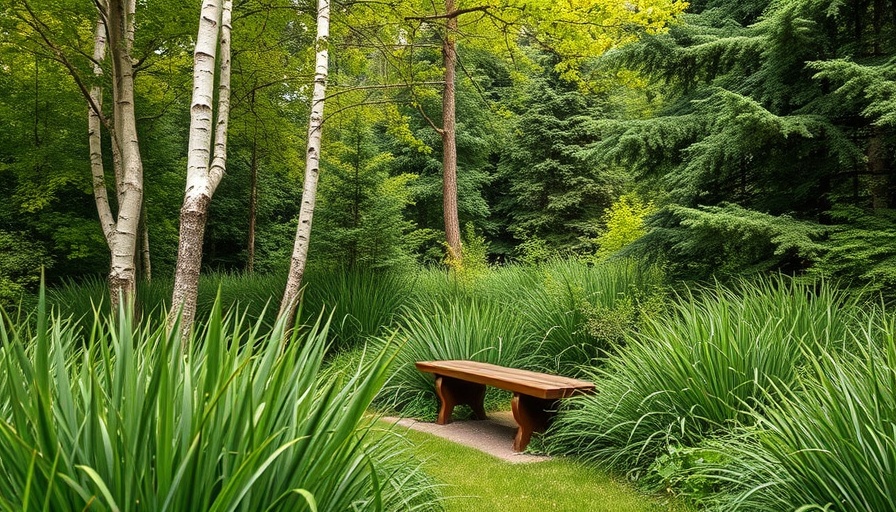
Understanding the Need for Cozy Garden Nooks
Garden design isn't just about aesthetics; it's about creating spaces that resonate with our deepest instincts. The Prospect Refuge Theory articulated by Jay Appleton more than four decades ago teaches us that humans desire both lookout points and hiding spots within their surroundings. This yearning can be traced back to our evolutionary survival instincts, where seeing without being seen was critical. Think about it: do you find more peace in a wide-open field or a secluded nook surrounded by lush greenery? The latter often provides comfort, safety, and a connection to nature.
Historical Context and Background of Garden Design
Historically, various cultures have integrated protective elements into gardens and landscapes. From the winding pathways of Zen gardens in Japan that encourage contemplation to the enclosed courtyards typical of Mediterranean design, these elements foster a sense of refuge.
Enclosed spaces have long been recognized for fostering social interactions but also provide an essential retreat from life's busyness. Homes were often built with gardens designed as the serene 'second living room,' where families could unwind, separate from the outside world. This notion has only grown in importance in today's fast-paced society, making garden nooks a timeless feature of home design.
Choosing the Right Plants for a Nook
Creating a cozy nook in your garden can be an enriching project. Selecting the right plants is essential for achieving the desired feeling of sanctuary while maintaining beauty and biodiversity. Shrubs that grow quickly and create denser foliage are often ideal candidates. American Elderberry, with its lush leaves and vibrant flowers, is a magnificent addition that attracts pollinators and provides natural coverage. Similarly, shrubs like Boxwood or Korean Spice Viburnum offer excellent options that add interest with their unique textures and scents.
Social Connection: The Value of Garden Nooks
The social aspects of garden nooks cannot be overlooked. They serve as respite spaces for families, friends, and even solitary contemplation. Imagine turning a corner in your garden and finding a secluded spot with a small bench tucked underneath flowering shrubs. This space might serve different roles—a hideaway for interactive play, a conversation nook, or a private aria for an afternoon read with a good book.
How to Create Your Own Cozy Garden Nook
Creating a cozy garden nook is an accessible project. Here is a step-by-step guide:
- Pick the Perfect Spot: Look for areas in your garden that naturally feel protected. A corner bordered by plants or near a fence can be excellent choices.
- Use Lots of Greenery: Surround your nook with dense foliage to create a sense of enclosure. Trees or high shrubs can act as guardians.
- Add Comfortable Seating: Invest in comfy outdoor furniture that invites relaxation. A simple bench or even an outdoor lounge chair can provide the necessary comfort.
- Incorporate Lighting: Soft lighting, like string lights or lanterns, can create a magical atmosphere, making your nook inviting even in the evening hours.
Future Predictions: The Trend of Outdoor Living Spaces
As we continue to grow more conscious of our mental and physical well-being, outdoor living spaces’ relevance becomes increasingly significant. A trend toward designing homes with nature-influenced environments is emerging prominently. Garden nooks, which allow individuals to connect with the outdoors while enjoying a sense of privacy, are more than just a design element; they represent a shift in how we perceive our living spaces.
Takeaway: The Unique Benefits of Cozy Nooks
In conclusion, garden nooks are essential for fostering connection, reflection, and comfort. They invite us to slow down, breathe deeply, and enjoy the gifts nature provides. As homeowners, creating these spaces and encouraging the growth of flora that supports our innate desires can enhance not only the aesthetics of our properties but also enrich our lives profoundly.
 Add Row
Add Row  Add
Add 




Write A Comment